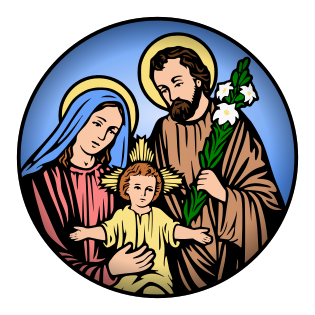An epigraph is a short quotation or phrase at the beginning of a book or chapter of a book that is intended to suggest its theme. It could also be an engraving or inscription. Nevertheless, it has a way of setting the tone, giving the reader an idea of the direction in which this going. If you have ever received an email or note in the mail from me you will notice that I tend to write JMJ at the top or tm… JMJ = Jesus, Mary, Joseph … tm = Christ and Mary. I started doing this in college as a way of giving direction to my words.
Today, Good Friday, we come across perhaps the most famous epigraph in history … INRI = Jesus of Nazareth King of the Jews. It was not uncommon at the time for a criminal to have his crimes written on placard – it was a way for the Romans to humiliate and make an example of them. The inscription placed above the sacred head of our Lord and Pilate’s response: “what I have written, I have written” was Pilate’s way of humiliating the Jewish leaders. They sent Jesus to death, renounced His royalty and yet He dies as their King. And not just their King – as King for all people … this is what the epigraph has come to signify … in the languages represented these were the languages of the time. Aramaic – the language of the people, Latin – the official language of the Empire, and Greek – the language of commerce. Pilate, without realizing it, has made Jesus’ own prediction come to true – “when I am lifted up from the earth, I will draw all people to myself.” He has declared Christ King … So, you are a king? he asks, “You say so” … and he did. Not just any King … our King.
There is something about the nature of kingship that is lost on us… Kings protected their people from their enemies, fostered unity among them, courageously led them in battle … fought for them, provided for them… Kings were heroes … Look who are our “heroes” today – celebrities, talk shows hosts and news anchors, politicians, athletes … Would any one of them lay down their lives, offer themselves in sacrifice for us … and yet time and time again we chose them over Christ, our King, we renounce His kingship, and we send Him to die …
In the old ritual of Palm Sunday, at the beginning of Mass, the priest would take the end of the processional cross and knock on the doors of the church. The doors then would open, and the Mass would begin. It was meant to be an image of Christ, who with the wood of the cross and the power of His love, knocked, from this side of eternity, on God’s door, on this side of world who could not otherwise find it nor have access to it. This is our King … He entered into battle with us and for us … He protects us from the snare of the enemy – the devil – and courageously died on our behalf that we may find life, that we may be able to find God … The cross stands, therefore, not only as means of sacrifice but also as the means of mercy … death leads to life. It is the sign of the victory of our King…
Remember, an epigraph gives us an idea of what the story is all about … As Christians we do not just bear images of crosses around our necks, we don’t just adorn them in our homes, on our walls and above our doors – we bear the cross on our souls – we bear Him in us … marked for all eternity with the King’s epigraph – the cross. Have we begun to live our lives in such a way that suggests the nature of our identity, that tells the story of who we are? “What I have written, I have written.” As if to say: “I need not say more” because the epigraph says it all.
